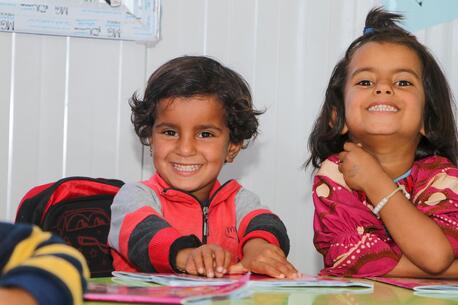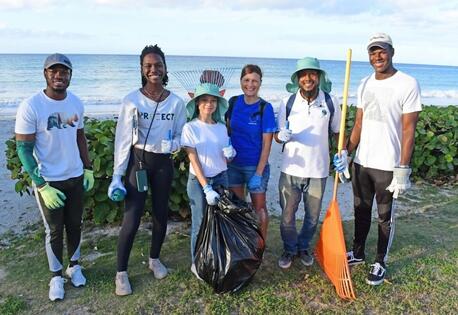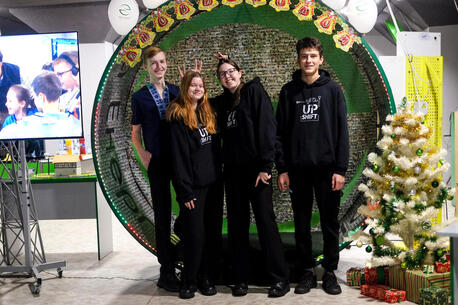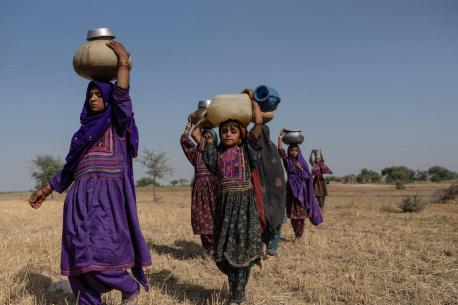
Stories of Suffering in Pakistan
Nearly a year since Pakistan declared a state of emergency following catastrophic flooding, many areas remain underwater. In June came record-breaking heat. Mothers in Sindh and South Punjab share what it's like to live on the front lines of the climate crisis.
In Pakistan, mothers and children bear the brunt of climate impacts
The patio of Kamli's house is the only place to take respite against the scorching heat. ''When it gets really hot, you barely have the energy to move," she says while coughing.
When devastating floods hit Pakistan in 2022, swamping her village like so many others in Sindh Province, Kamli found shelter at a temporary roadside camp. She is back home now with her seven children, and the damaged walls have been rebuilt. But life is difficult.
Her husband died years ago of liver disease, leaving her a widow. Her main source of income — cotton picking on the once fertile lands — is gone.
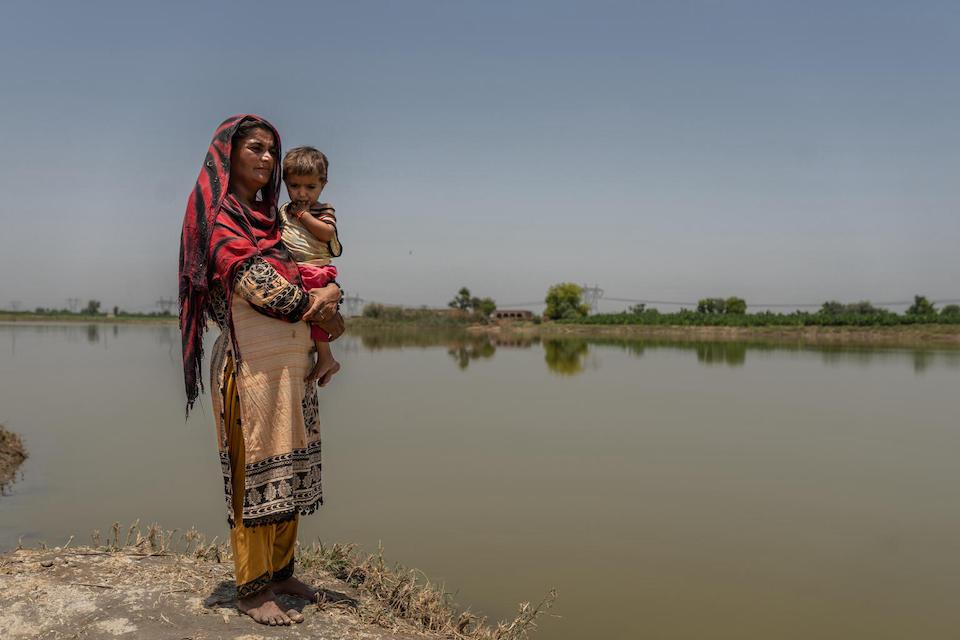
''We live with fear in our bodies, with the anxiety of not knowing when the next disaster will be," Kamli says under the watchful eyes of her daughters. "This is the only land I know. My ancestors are from here, we work this land, and I want to stay here. There is no other option."
She is not the only one struggling to survive amid increasingly disastrous climate impacts.
Noor, 22, has already lost two babies. Her first child died from complications during pregnancy. Her second child was born at home with the help of a midwife just days before the rains came. At three days old, her baby stopped breathing.
“I was barely eating and couldn’t breastfeed," Noor says. "We buried my baby a few meters from home. It was still raining.”
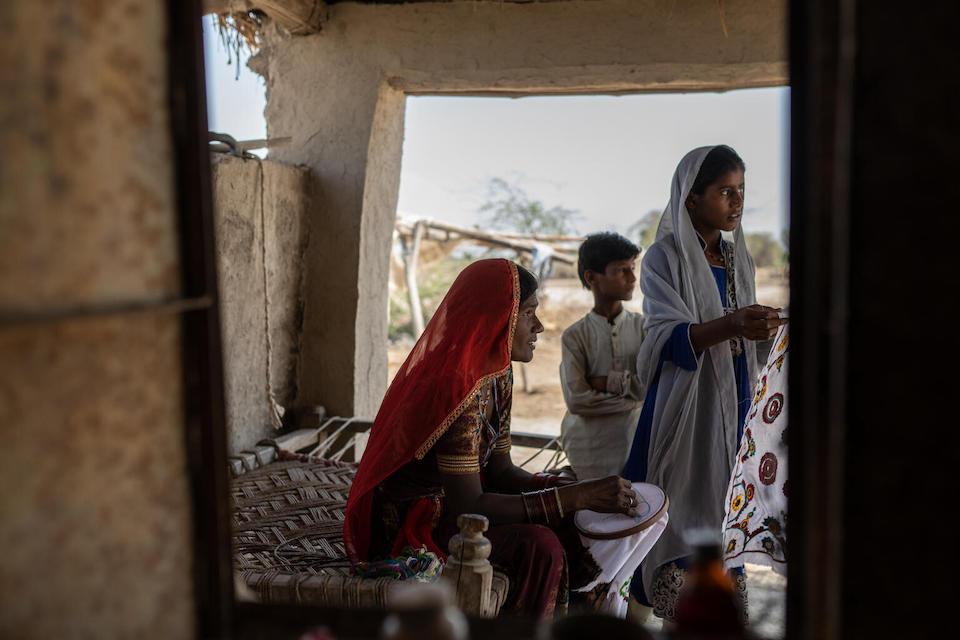
After her house in Sindh was destroyed, Noor was able to escape in a makeshift boat with help from community members. Eight months later — and four months into her third pregnancy — Noor was still living under a tarp.
She says she has been praying that her third child will survive the country's harsh weather conditions. Extreme heat has become the norm, and is especially dangerous for pregnant women. Any physical labor or exertion that increases core body temperature can put the health of both mother and baby at risk.
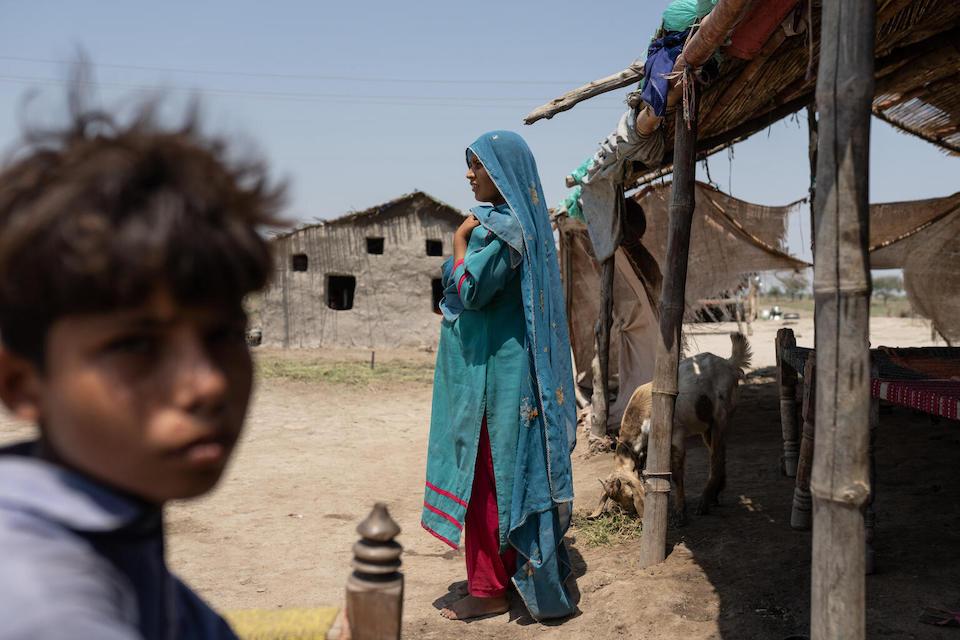
In the village of Balouch Zardari, Sindh, Benazir, 30 and a mother of six, stares blankly at the stagnant water that has yet to recede while recounting hardships that began before the rains came and have only gotten worse.
“We did not have access to drinking water, and our children were hungry due to the lack of food," Benaziz says.
We are fighting to survive, day after day.
"Now everything is more difficult. My husband works when he can in the banana plantations and earns around 200 or 300 PKR [Pakistani rupees, or about $3.50 a day]. With that, we must feed six children. We can only afford bread and a little chili for one meal a day. We have more mosquitoes and diseases, and the health center is 15 kilometers [over 9 miles] away. We are fighting to survive, day after day."
Last summer, in the middle of the rains, Benaziz’s 9-month-old daughter perished while they were riding in a wagon on the way to a hospital. Her older daughter, 8-year-old Uzma, has been forced to drop out of school and work in the fields.
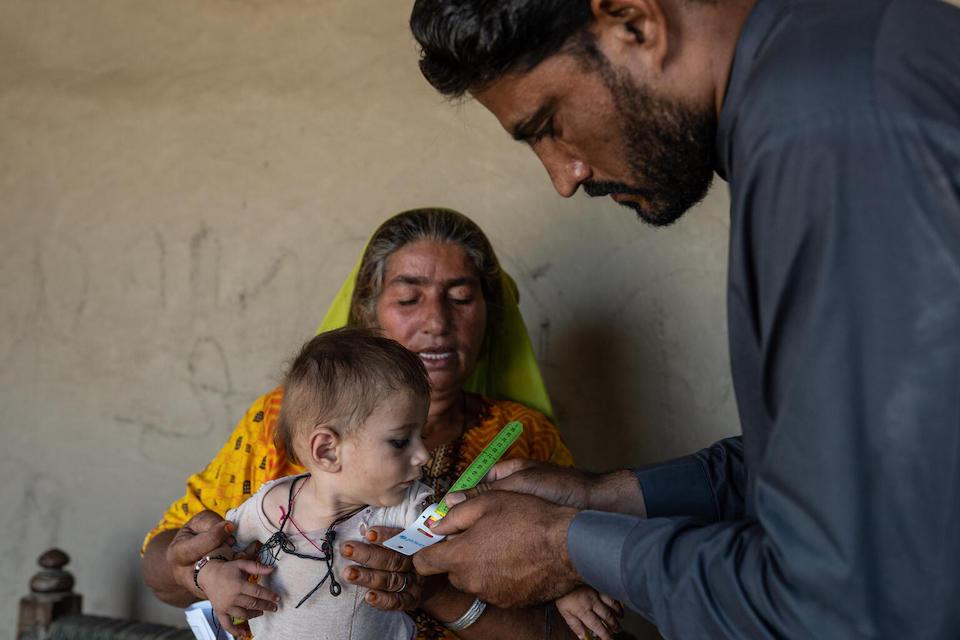
Climate a factor in child malnutrition crisis
Son Bhari, 55, takes care of her grandson, Sahil, who is 8 months old and suffers from severe acute malnutrition. The boy is receiving treatment for his condition through a UNICEF-supported nutrition program that provides him with two packets of Ready-to-Use Therapeutic Food per day for one month.
Shelf stable and easy to administer, RUTF is given to severely malnourished children aged 6 months to 5 years. If the treatment goes well, Sahil will start gaining weight and strength, thanks to the vital nutrients it contains.
The heat and the lack of food have caused enormous emotional and physical stress for Sahil’s mother, Bhari explains as she feeds Sahil some of the peanut paste. “My daughter is in hospital. She suffers from anemia, is unable to breastfeed and had complications after giving birth. I hope she returns soon. Her baby needs her."
UNICEF estimates that more than 1 in 9 children in flood-affected areas of Pakistan — nearly 1.6 million children — are suffering from severe acute malnutrition, and that as many as 7 million people in the country — mainly children, adolescent girls and pregnant and breastfeeding women — are in urgent need of nutrition support.
Sadly, newborn deaths and serious complications during pregnancy are part of our work. There is no doubt that climate change is wreaking havoc on the health of mothers. — Dr. Ayesha Jameel, Kotla Eason Health Center, South Punjab Province
Dr. Ayesha Jameel works as the head of the Kotla Eason Health Center in South Punjab. The atmosphere in the small center is frantic, and despite the heat, about 20 mothers, many of them pregnant, wait their turn while fanning themselves with their veils.
''Sadly, newborn deaths and serious complications during pregnancy are part of our work," Dr. Jameel says. "There is no doubt that climate change is wreaking havoc on the health of mothers."
Many have no other option than to go back to work in the fields under the sun after a week of giving birth, the doctor adds. "The minimum amount of rest we recommend is three months, so that their body can recover. Mothers have a survival instinct to save their children.’’
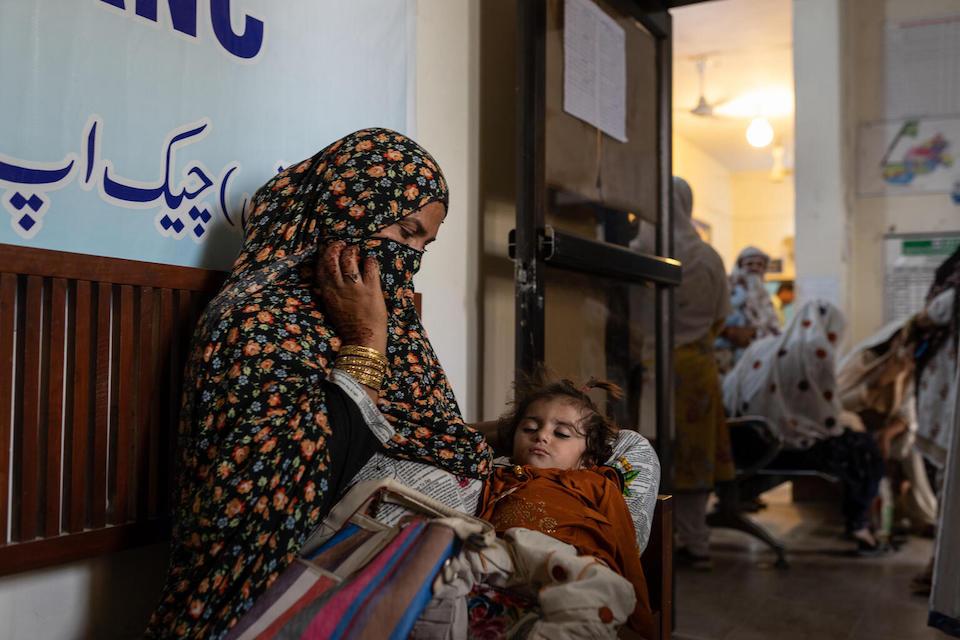
Shahida has four boys and two girls. She almost lost her 10-month-old little girl, Ayat, during the 2022 rains. She had to be evacuated in an ambulance from her flooded house, with the help of her husband, to give birth.
''I was terrified," Shahida recalls. "As a result of stress and anxiety, I lost consciousness. I could not breastfeed my little girl and felt very weak. It was so hot. It was a nightmare. I do not remember anything.''
It was so hot. It was a nightmare.
Shahida suffered from anemia and malnutrition, high blood pressure and dizziness. For three days, her husband and one of her daughters held the child close to her chest to keep her safe and warm. ''It's a miracle she's here," Shahida says. "I love everything about her."
The rise in average temperatures and increase in frequency, intensity and duration of heat waves are exposing populations in the country to heat stress, contributing to negative health outcomes, particularly for infants, children and pregnant women.
Heavily pregnant women — those in their second and third trimester — are considered acutely vulnerable to extreme heat due to physiological changes that occur during pregnancy.
Mothers who work for hours under the sun and at more than 40 degrees C [104 degrees F] are exposed to high levels of dehydration. "This, added to the extreme heat, can lead to serious problems in the development of the fetus and to a higher risk of early contractions, high blood pressure, seizures, hypertension and maternal stress," Dr. Jameel points out.
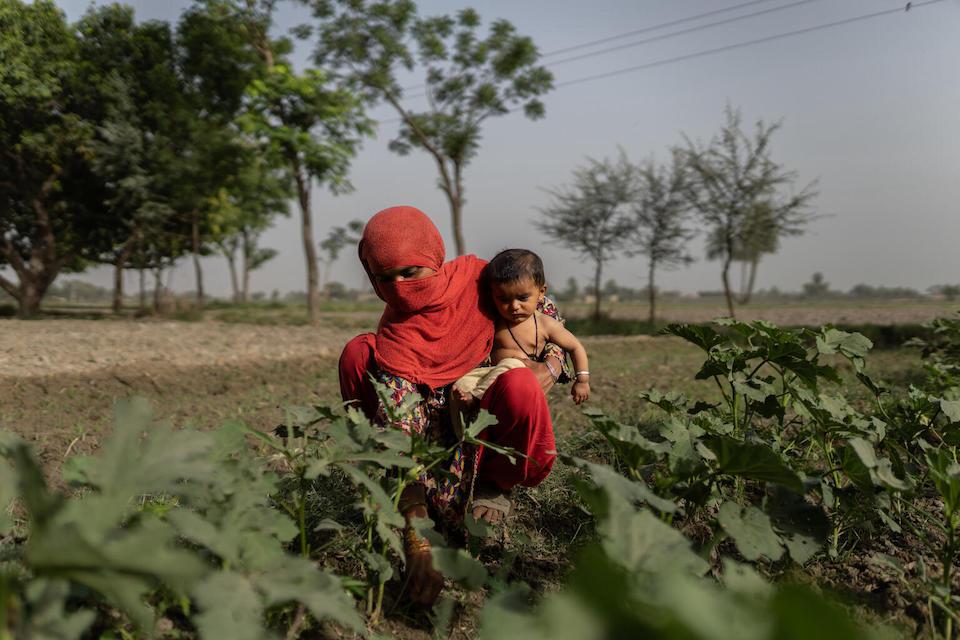
Nasreen Bibi was pregnant with twins before the 2022 rains came. The nurses from the health center where she gave birth helped her to deliver the first baby, but there were complications, and she was referred to Rajanpur hospital, where she delivered her second.
The first baby died hours after birth. The second lived for five months but suffered from severe malnutrition and frequent diarrhea.
"My body couldn't take it anymore," Bibi says. "I couldn't breastfeed my son, who got sick, and in a matter of days, he stopped breathing."
Bibi returned to work 40 days after giving birth to a healthy baby girl. The lands have started to recover from the floods, she says. She brings her infant daughter to the fields with her, taking breaks in the shade to breastfeed and drink some water.
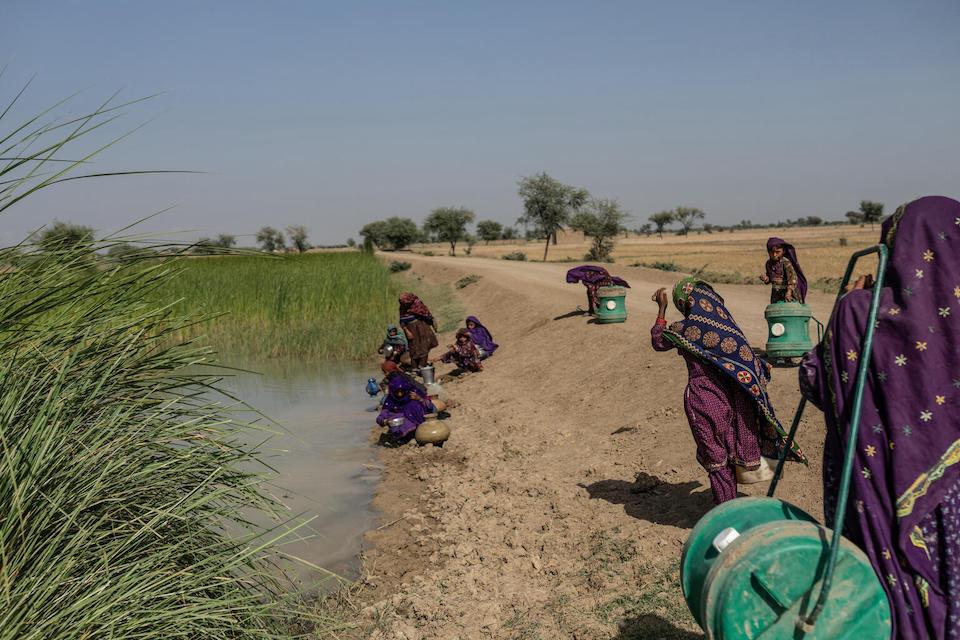
With water systems damaged by flooding, clean, safe water is hard to come by
The 2022 floods damaged most water systems in affected areas, forcing more than 5.4 million people to rely solely on contaminated water from ponds and wells.
Even before the 2022 monsoon season, just over one-third of the country's water supply was considered safe for consumption.
Women and young girls in Muhammad Pur Ghamand village, South Punjab, have been fetching contaminated water daily from a pond after the water tap in their village suffered flood damage.
An additional obstacle to practicing good hygiene is the lack of proper toilets. This disproportionally affects children, adolescent girls and women, who are at added risk of shame and harm when defecating outdoors.
For Saima, 10, this often means waiting until dark to try to find some privacy. “Now we don't have a bathroom, so at night I have to walk alone, but I’m scared of creatures like scorpions and snakes," she says.
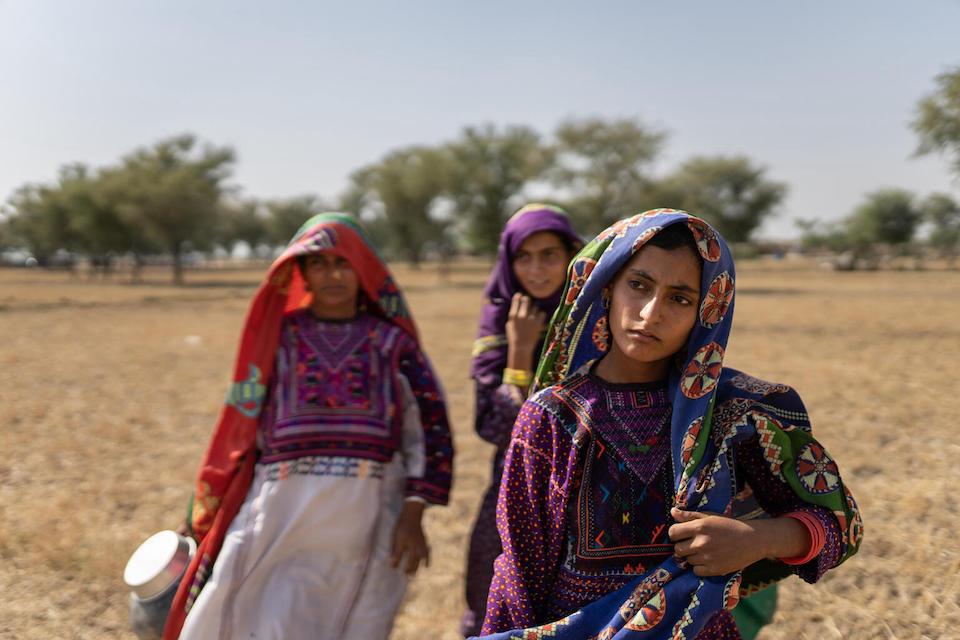
Climate-related crises do not affect everyone equally. Mothers and children will suffer more than adults, with those in the poorest communities bearing the biggest burden.
The scale of devastation from the 2022 floods was unprecedented, and recovery will take months if not years. And for Pakistan, it is not a question of whether another large-scale climate disaster will strike, but when.
Bherawaan, a mother of seven, gave birth in the darkness at home as rains forced all her neighbors to leave their homes. “Only a mother knows how this pain feels. Who knows what our destiny will be?”
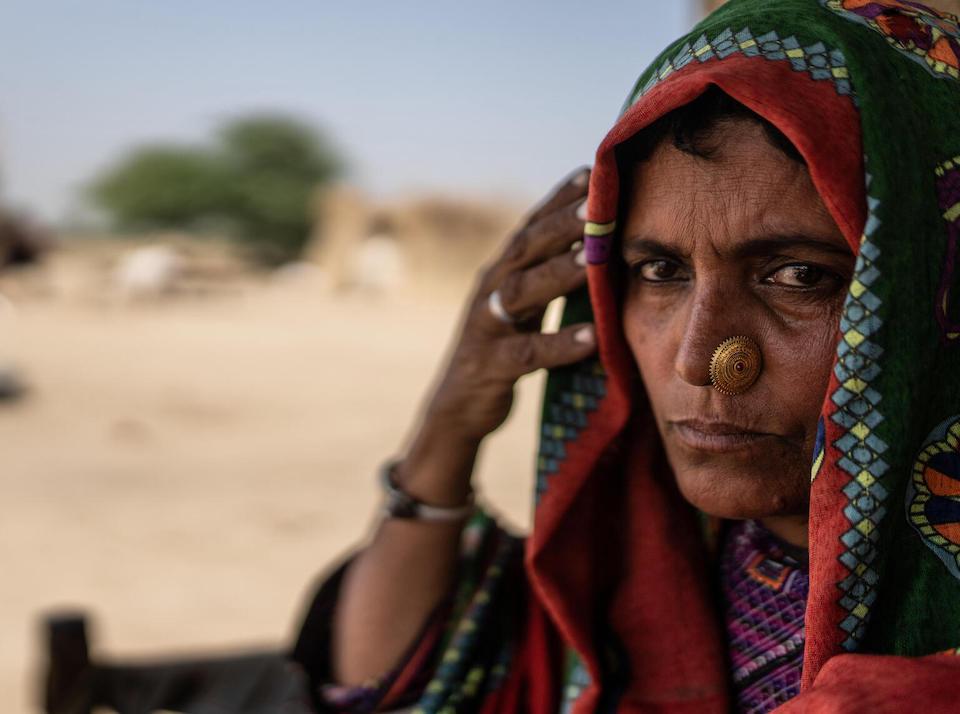
“Only a mother knows how this pain feels," she says. "Who knows what our destiny will be?” © UNICEF/UN0849948/Haro
UNICEF: Time for country governments around the world — and the fossil fuel industry — to step up and address the "great injustice" that is the climate crisis
Pakistan is not the only country suffering from extreme heat and other climate impacts. A new UNICEF analysis shows that 76 percent of children across South Asia are now exposed to consistently high temperatures of 35 degrees C or higher [95 degrees F].
"Many of these children have no carbon footprint, and yet they are very much on the front lines of the climate crisis," UNICEF Spokesperson James Elder said in an interview with CNN. "It is a great injustice ... And as long as mitigation measures keep being ignored by governments and the fossil fuel industry, that will continue."
It is the fossil fuel industry — "the polluted heart of this climate crisis" — that should be driving, not obstructing, the global transition to renewable energy, Elder added, echoing recent comments by UN Secretary General António Guterres.
UNICEF does a lot of resilience work to strengthen education and other services for children. "There are things that can be done, things that UNICEF is doing," he said.
"We are the first generation to know the climate crisis is real, and we are probably the last one to be able to do anything about it," Elder said. "This is an obligation that simply must be met for the boys and girls of this region [South Asia] and across the world."
Learn more about UNICEF's ongoing mission to support vulnerable children and families in Pakistan. And learn more about UNICEF's global call to accelerate climate action.
You can support this work and help increase UNICEF's impact. Donate today.
